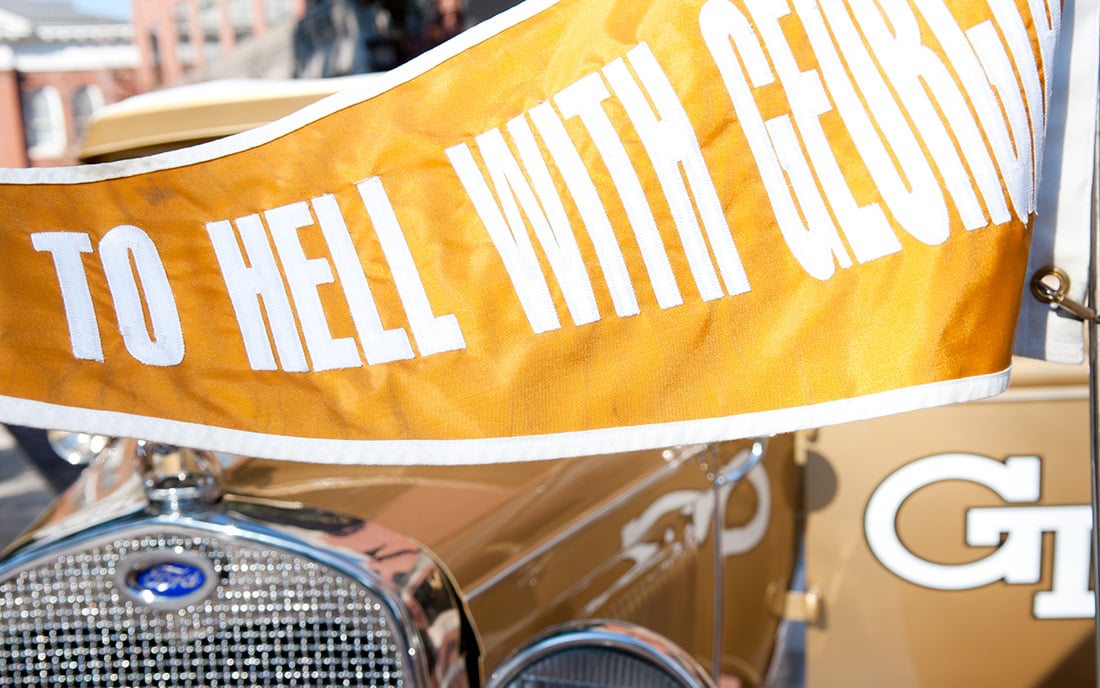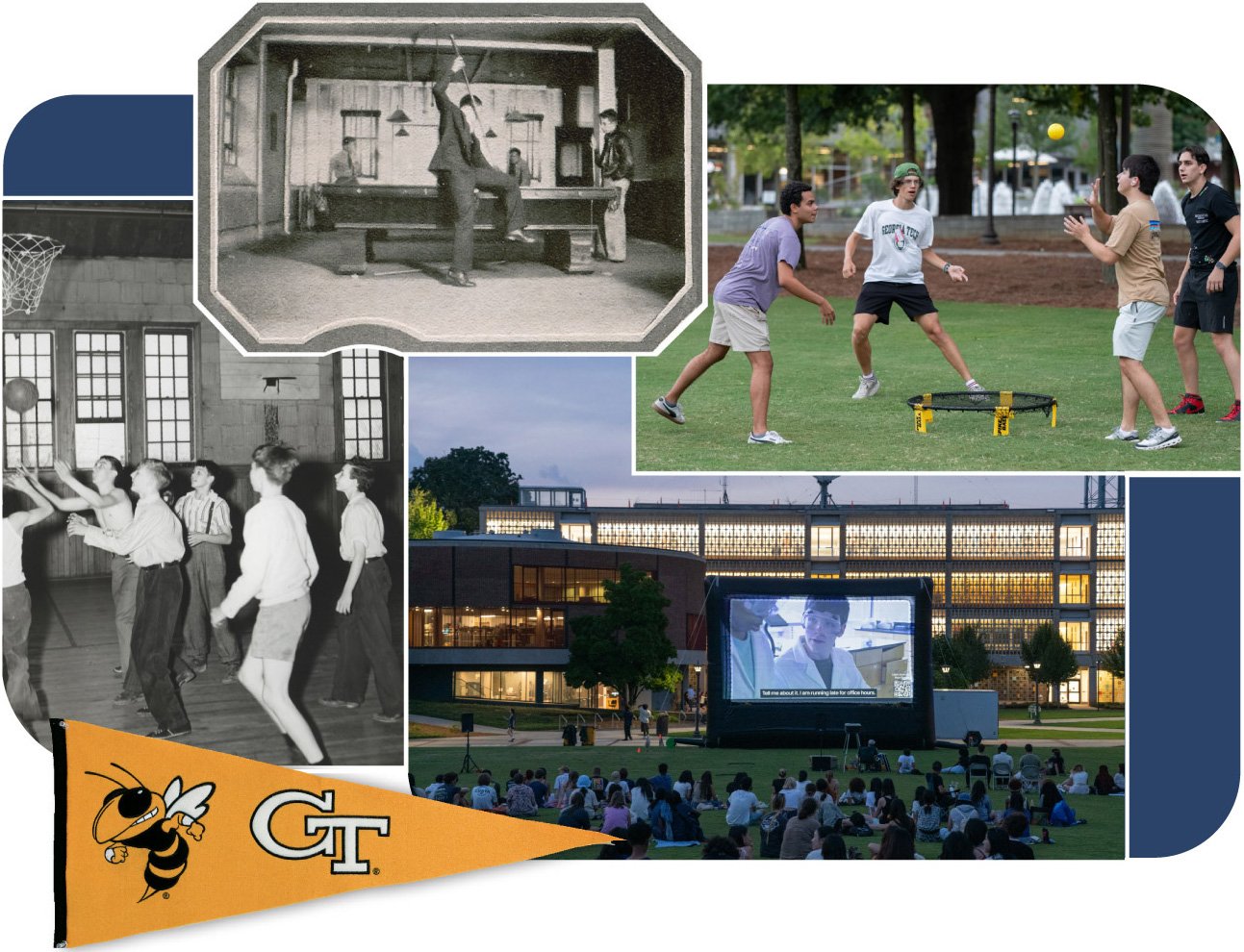A Work Divided
By: Tony Rehagen (Illustrations by Katie McBride) | Categories: Tech History

After the Price Gilbert Memorial Library was built in the early 1950s, P.M. Heffernan, head of the School of Architecture, urged Harris to create a sculpture to beautify the building’s plain brick outside wall. He took as his muse Pygmalion, the sculptor from Greek mythology who was so enamored with his depiction of a woman that he prayed to Aphrodite to make her real. Harris created two aluminum maquettes, or scale models, of what would have been a much larger art relief, one of a nude Pygmalion on bended knee beholding the rigid sculpture of a female in his hand; the other a mirror-image of him, except in his palm lies the body of a living human.
Harris’s commission fell through. “Mrs. Price Gilbert did not want nude men on her husband’s namesake building,” says Robert Craig, professor emeritus of the College of Design, who has studied Harris and his work. Left with the maquettes, he kept one to display on his studio, just off campus at 177 5th St. He gave the other to Heffernan, who mounted it on an exterior wall on the rear of his house across 5th St. at 166. The secluded location of Heffernan’s maquette probably helped make it an easier target for pranksters to steal for a day or two before somehow returning it to its mount—a caper that was replayed more than once through the years. Eventually, Heffernan’s figure was moved to the more visible front wall of the Arch building, and then, finally, installed inside near the Dean’s Office, where it hangs to this day.
The real disappearing act was Harris’s maquette, which was removed from his studio after his death in 1987. “It remained in the Harris family after his death and was offered for sale,” says Craig. “I don’t know who has it now. But the two need to be together.”

